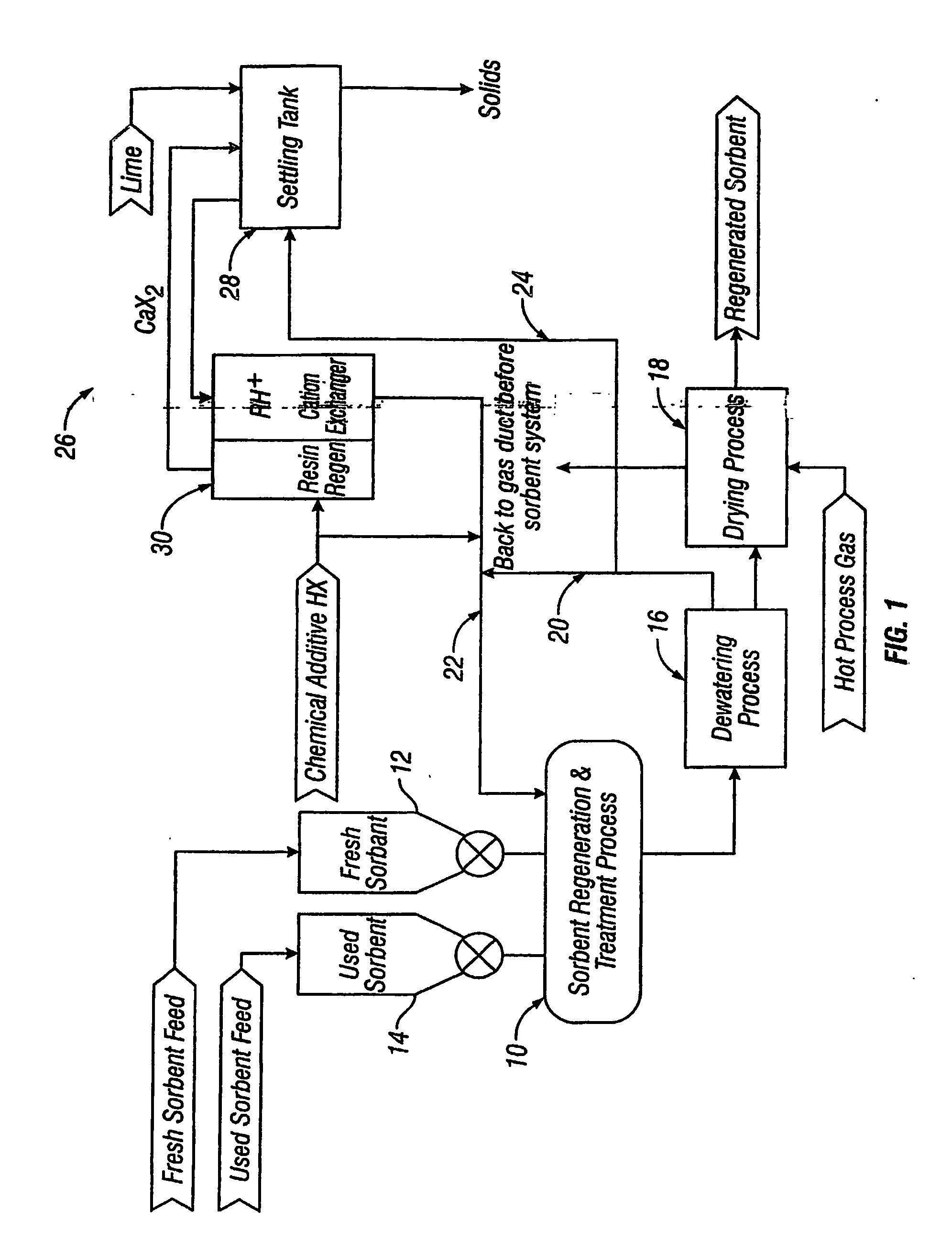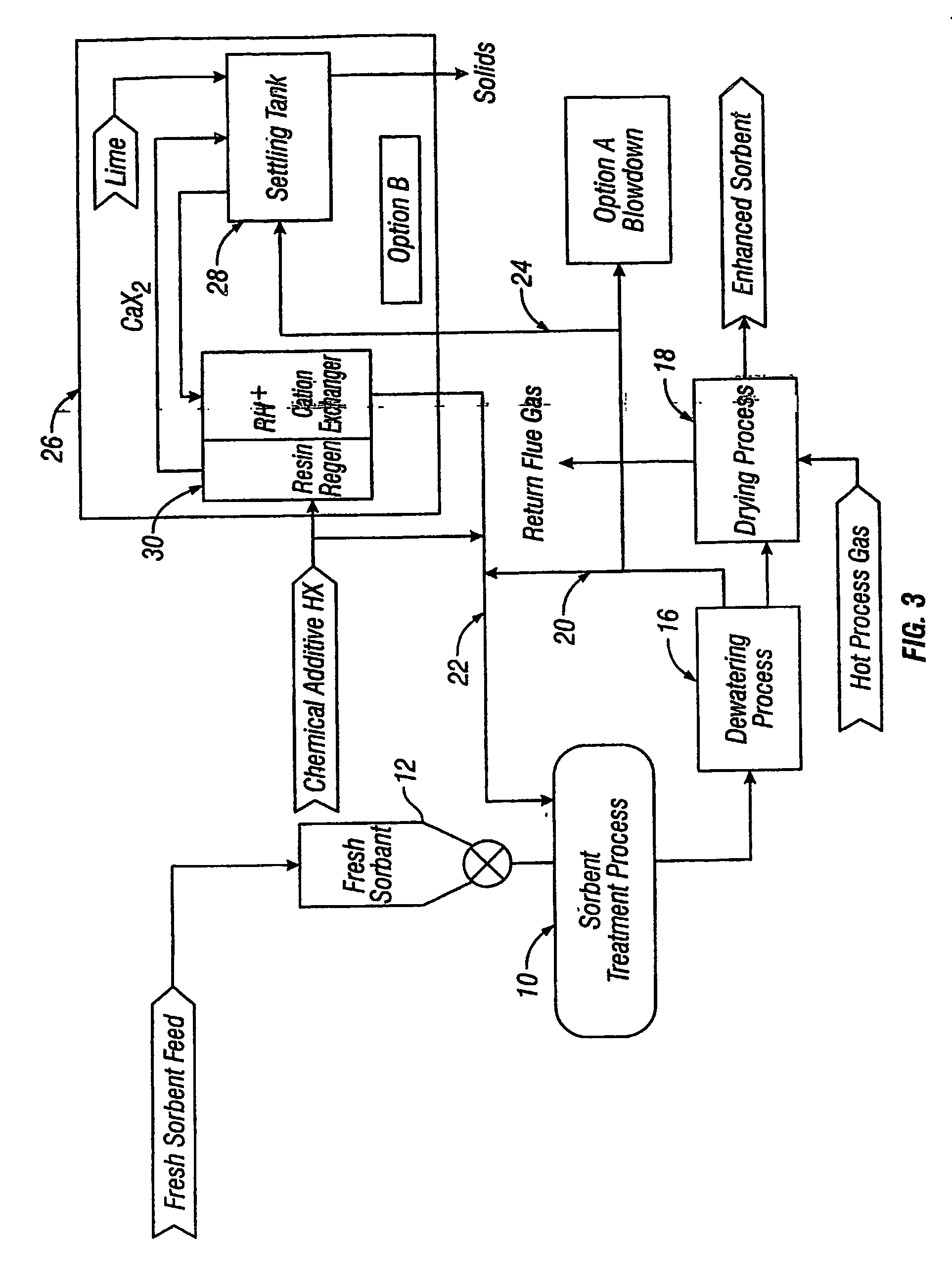Process for regenerating a spent sorbent
a sorbent and sorbent technology, applied in the field of regenerating spent sorbents, can solve the problems of only using sorbent once and discarded, waste of solid waste, and emitted several pounds of mercury per day in some utilities, and achieve the effect of enhancing increasing the effectiveness of a sorben
- Summary
- Abstract
- Description
- Claims
- Application Information
AI Technical Summary
Benefits of technology
Problems solved by technology
Method used
Image
Examples
Embodiment Construction
[0017] The present invention relates to the process for the removal of mercury and other pollutant species from flue gas streams generated during the burning of fossil fuels, such as in a coal-fired utility. This removal process utilizes a sorbent to remove pollutants from the flue gas stream, which is at the same time interacting with other flue gas components that result in poisoning or deactivating the sorbent and reducing its capacity or reaction rates with the pollutant species. The present invention provides a cost effective way to capture the pollutants by utilizing a process to regenerate the reactivity and capacity of the sorbent.
[0018] Generally, a process of the present invention includes washing a used sorbent with agents selected to remove the anions that collect on the sorbent during exposure to flue gas and which poison the binding sites for mercury or other contaminants. The process also impregnates the sorbent with agents that promote the chemisorption of mercury a...
PUM
| Property | Measurement | Unit |
|---|---|---|
| concentration | aaaaa | aaaaa |
| temperatures | aaaaa | aaaaa |
| reaction rates | aaaaa | aaaaa |
Abstract
Description
Claims
Application Information
 Login to View More
Login to View More - R&D
- Intellectual Property
- Life Sciences
- Materials
- Tech Scout
- Unparalleled Data Quality
- Higher Quality Content
- 60% Fewer Hallucinations
Browse by: Latest US Patents, China's latest patents, Technical Efficacy Thesaurus, Application Domain, Technology Topic, Popular Technical Reports.
© 2025 PatSnap. All rights reserved.Legal|Privacy policy|Modern Slavery Act Transparency Statement|Sitemap|About US| Contact US: help@patsnap.com



